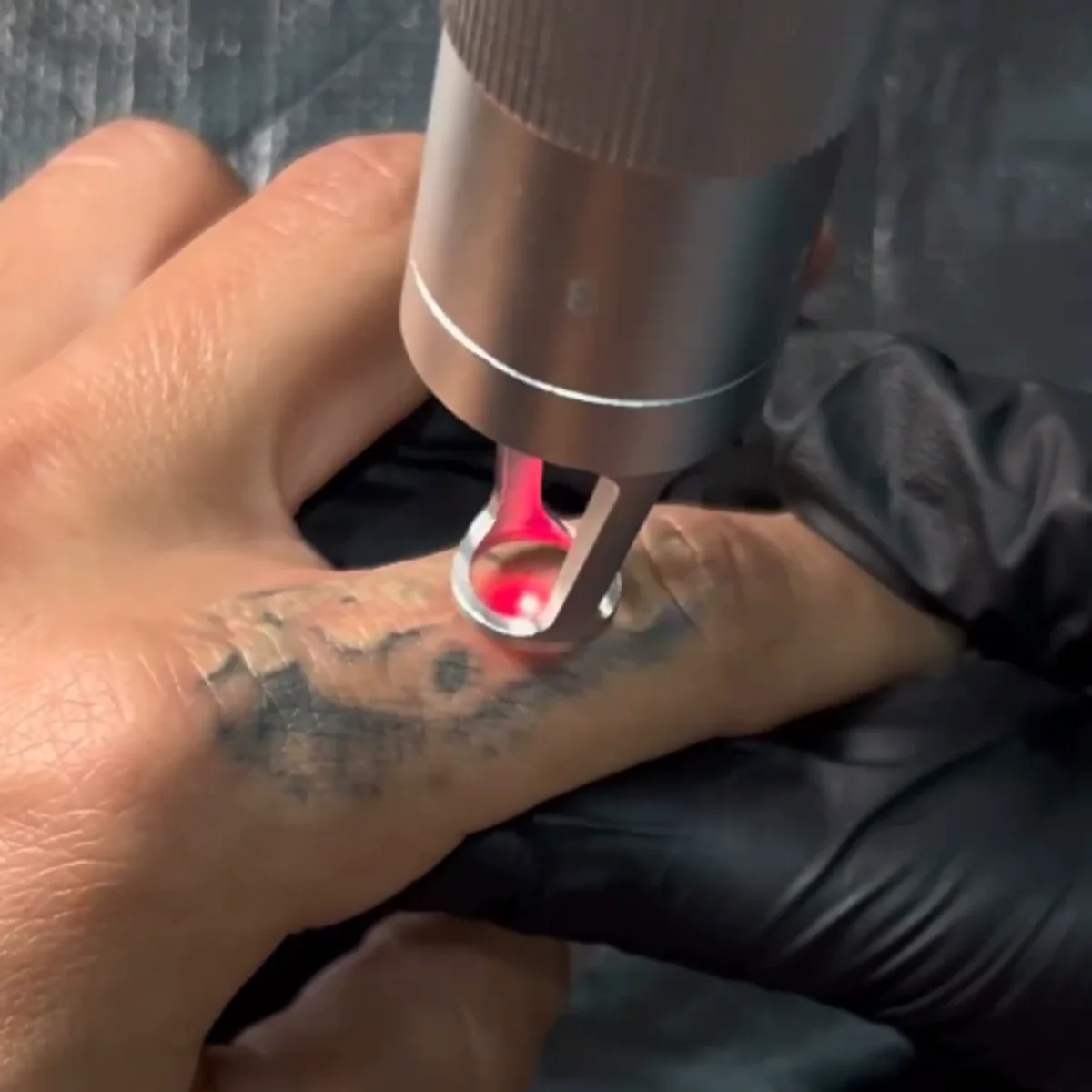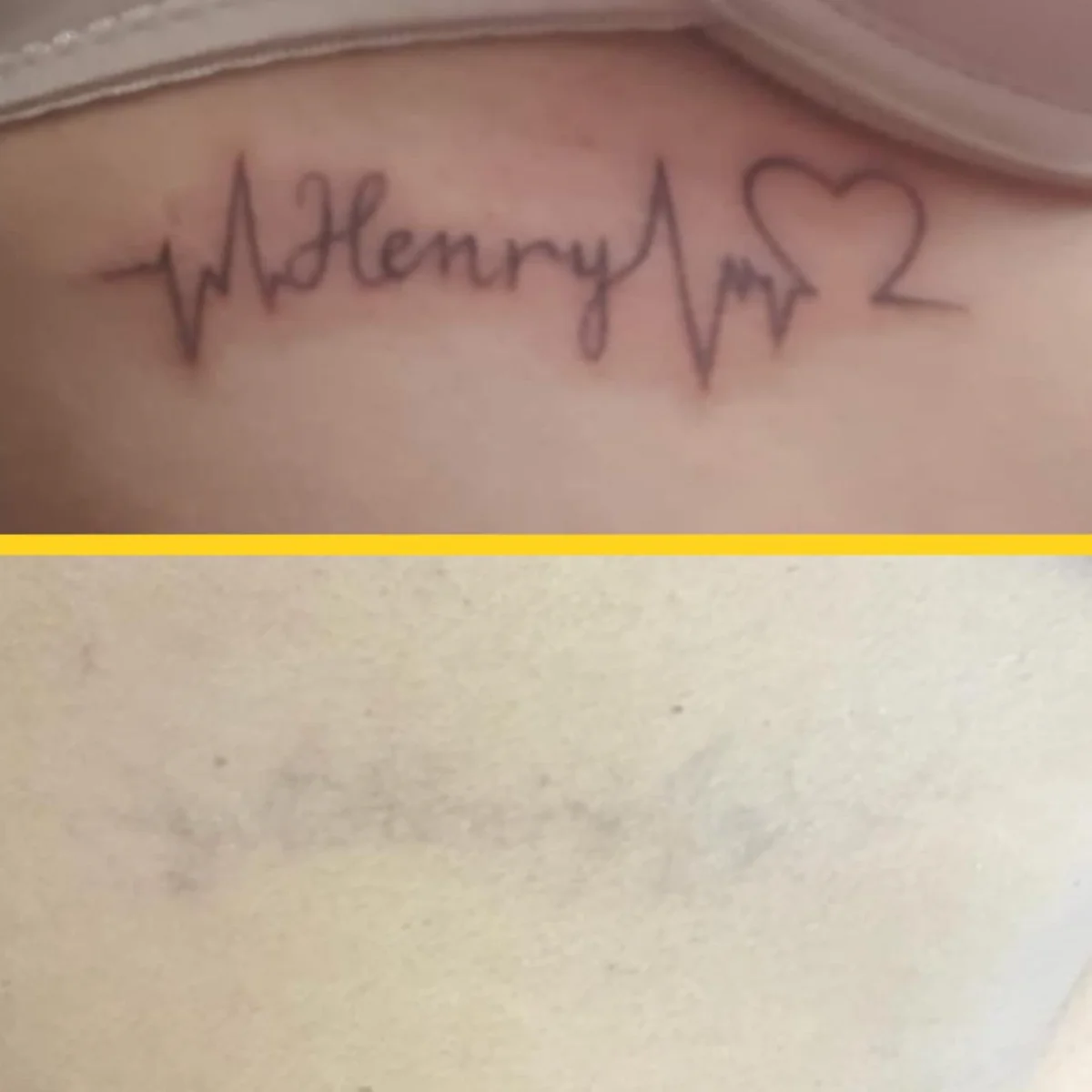Laser tattoo removal is a method used to reduce the visibility of unwanted tattoos. Technicians use lasers to target the ink in the tattoo without affecting the surrounding skin. The high-intensity light pulses heat the ink, causing it to break into smaller pieces. These pieces are then cleared away by the immune system, causing the tattoo to fade gradually over time.

Post-treatment effects of laser tattoo removal
A tattoo removal session with a laser generally wraps up in 40 minutes or less. However, the healing phase stretches across a few weeks. Following each appointment, your skin requires a period to mend and flush out the ink fragments from your tattoo.
This article will shed light on what to expect post-laser tattoo removal and how to expedite your skin’s recovery.
The process of tattoo removal
Understanding the laser tattoo removal process is essential before discussing the recovery period.
After applying a tattoo, the body’s immune system removes the ink, which is seen as a foreign substance.
Laser energy is used during tattoo removal to break down ink particles into smaller pieces, allowing the immune system to eliminate them through the lymphatic system.
During each session, the tattoo removal process gradually fades the ink, resulting in the disappearance of the tattoo.
Does the laser damage skin nearby?
Our laser technicians utilize laser technology to target specific wavelengths of energy to remove tattoo ink without causing harm to the surrounding tissue.
Due to their safety and effectiveness, the Picosecond and nanosecond lasers are commonly used for tattoo removal.
PicoSure laser technology offers the advantage of requiring less heat energy, resulting in reduced discomfort and damage. It has also been shown to remove tattoos faster and more effectively than traditional laser technology.
Despite some discomfort during recovery, the procedure is not entirely painless.
What happens after laser tattoo removal?
After treatment, the tattooed area may appear white and chalky due to the release of carbon dioxide from the skin. This is a normal part of the healing process for laser tattoo removal, and the reaction typically subsides within an hour.
After treatment, the affected area may exhibit redness, sensitivity, swelling, and sometimes blistering. These side effects typically improve in the days following the session and should resolve within a week.
Typically, discomfort is most pronounced during the first week, but most clients can resume their routine without missing work or social commitments.
How does skin look after tattoo removal?
After each laser treatment, redness and slight swelling are expected in the treated area. Some people may experience discomfort similar to sunburn, but these are normal reactions indicating that the body responds well to the treatment and healing.
During the tattoo removal, your body will gradually remove ink particles. Fading may not be immediately noticeable as each session targets different layers of ink, breaking them down for removal.
After removal
Refraining from exercise or strenuous activities on the first day after treatment is advisable to minimize irritation and discomfort caused by increased blood flow to the area.
It is recommended to avoid soaking the area until it is fully healed and to refrain from bathing or swimming in pools for up to a week after treatment. Showers are acceptable, but care should be taken to avoid soaking the tattooed area.
Avoiding direct sunlight exposure for ten days before and after each session is advised to prevent skin damage and reduce the risk of hyperpigmentation. To protect the treated area from sun exposure, it is recommended to use SPF50 sun cream if avoidance is not possible.
Proper skin care
After each session, the clinician will apply ointment, gauze, and a waterproof dressing to the area. Keeping this dressing on for at least 4 hours after treatment is recommended.
Skin care is essential for optimal treatment outcomes. Your practitioner will give you a personalized aftercare plan to follow. Following these instructions will help your skin heal quickly between sessions. Make sure to:
- It is recommended to refrain from picking or rubbing the area.
- Follow the clinician’s instructions on how to reapply the ointment.
- Be sure to shield the area from direct sunlight.
- Avoid using exfoliating or harsh skincare products on the area.
- Please be mindful of excess water when showering to prevent soaking the area.

Healing process
The recovery period between laser tattoo removal treatments allows the skin to heal correctly according to the clinician’s recommended schedule during the initial consultation.
After treatment, possible side effects include redness and mild swelling for up to 10 days. It is essential to remember that even if no discomfort is felt after the first week, it may take several weeks for the skin to heal fully. Some individuals may take up to 8 weeks to recover before their next session.
Is laser tattoo removal painful?
Clients often liken the sensation of getting a semi-permanent tattoo to the feeling of an original tattoo, describing it as similar to a light rubber band snapping on the skin.
Laser treatments are known for being gentle on the skin, as a cooling system is used to reduce discomfort during the procedure. Patients may also receive a local anaesthetic to numb the area before treatment.
Following laser treatment, the treated area may feel similar to a sunburn and should be tended to according to post-laser tattoo removal skin care guidelines.
Over-the-counter painkillers can be used to manage discomfort, but it is recommended to avoid products containing aspirin to reduce the risk of bruising.
Can skin bounce back after laser tattoo removal?
Post-laser tattoo eradication, expect your skin to revert to its pre-tattoo condition. Most tattoos can be eliminated, and adhering to post-treatment care recommendations is crucial for your skin to recover and clear of any ink.
Typically, clients might need between 4 to 8 sessions to completely do away with a tattoo; this varies based on your skin’s tone and the tattoo’s size and pigmentation.
It’s crucial to understand that any scarring from when the tattoo was first done might become more evident once the tattoo ink is cleared away. The laser tech isn’t responsible for scarring but may uncover scars previously hidden by the tattoo ink.
During your complimentary consult, your specialist will look at your tattoo and discuss any scarring that may come to light after the tattoo’s removal.
Follow your aftercare instructions
Following the post-care advice your specialist hands out is essential for your skin’s recovery and to achieve the results you’re aiming for. Your skin will mend faster after each treatment, allowing the tattoo to be removed more swiftly.
Rushing into another treatment session before your skin has fully recovered is not advisable. Jumping the gun won’t hasten the eradication process and might harm your skin’s appearance by the end of your treatment.
Removing a tattoo is a journey; our team is here to support you towards achieving clear, ink-free skin. Book your no-cost consultation today.


